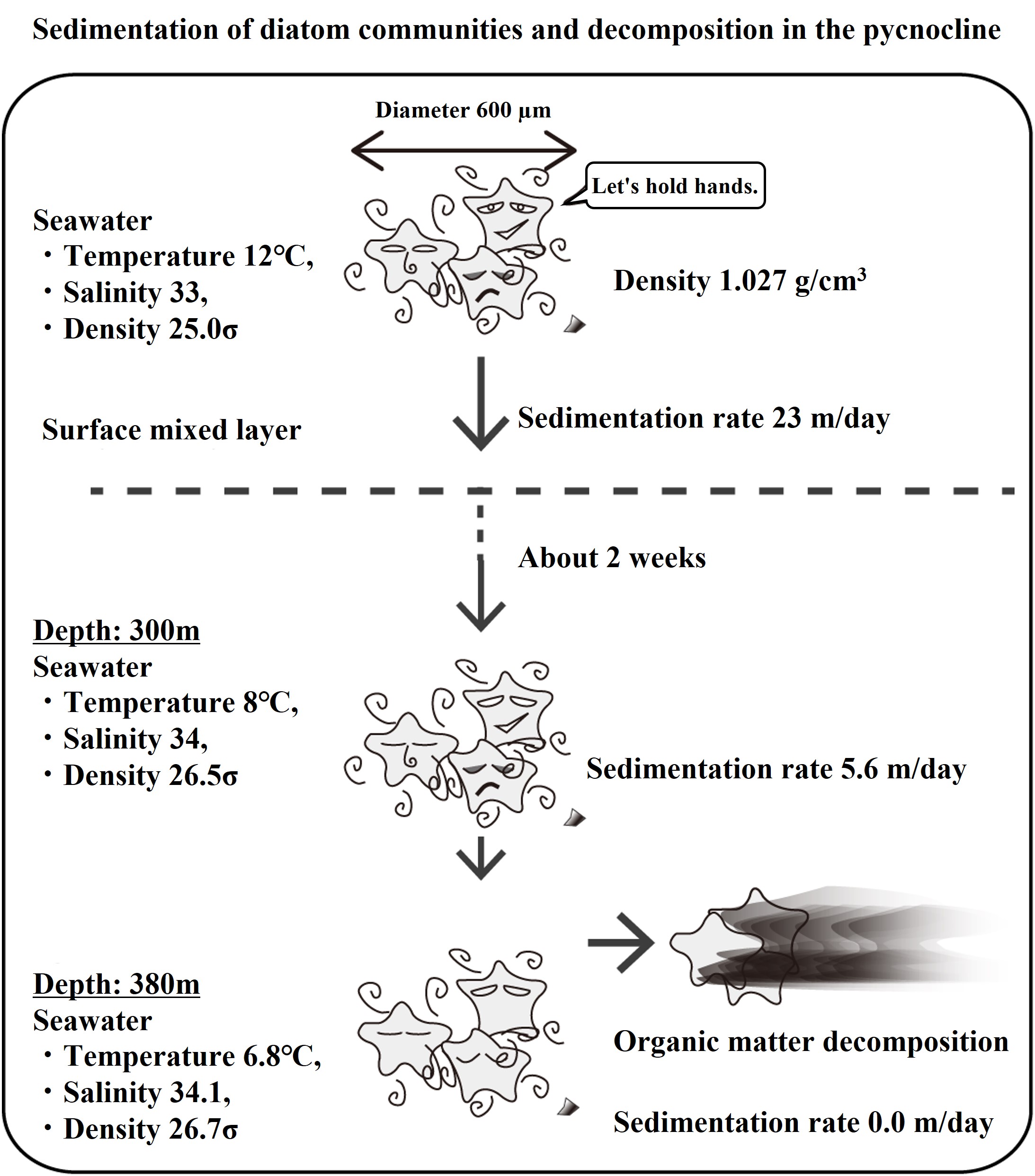Stagnation of particles in the pycnocline (Theory)
Since phytoplankton is floating around in the surface water, the particle density is similar to that of seawater. Let us assume that a phytoplankton swarm with a radius of 200 μm and a density of 1.027 g/cm3 is in the surface mixed layer. Since the sedimentation rate of this community particle is small (10 m/day), it would be able to remain in the mixed layer if there is sufficient vertical convection in the surface layer. If the swarm grows to a radius of 300 μm by joining hands with many others, the sedimentation rate will be 23 m/day. Depending on the vertical convection of the water (※), the swarm may pass through the lower part of the mixed layer and fall into the underlying pycnocline. The picture below shows the path of particles that cannot pass through the pycnocline.

Since there is almost no vertical convection in the pycnocline below the mixed layer, the aggregate settles without resurfacing. Even if the original particle density of 1.027 g/cm3 is maintained, the density difference becomes small at a depth of 300 m because the seawater density increases to 26.5σ, and the sedimentation rate drops to 5.6 m/day. Furthermore, at a depth of 380 m, the seawater density is 26.7σ, and the sedimentation rate becomes 0.0 m/day. Therefore, the sedimentation particles of the phytoplankton community will remain in the pycnocline at depths deeper than 300 m and will be decomposed. (Note: This is only an example of a calculation, as it depends on particle density, size, and seawater density.)
This is thought to be one of the factors contributing to the formation of a minimum layer of dissolved oxygen (discussed in later chapters).
